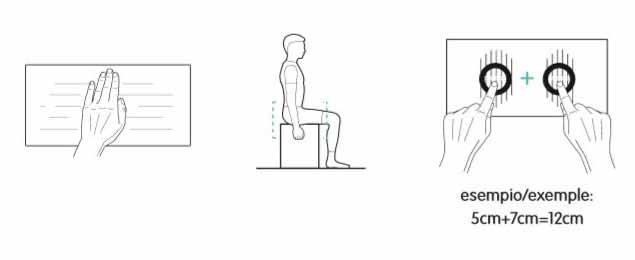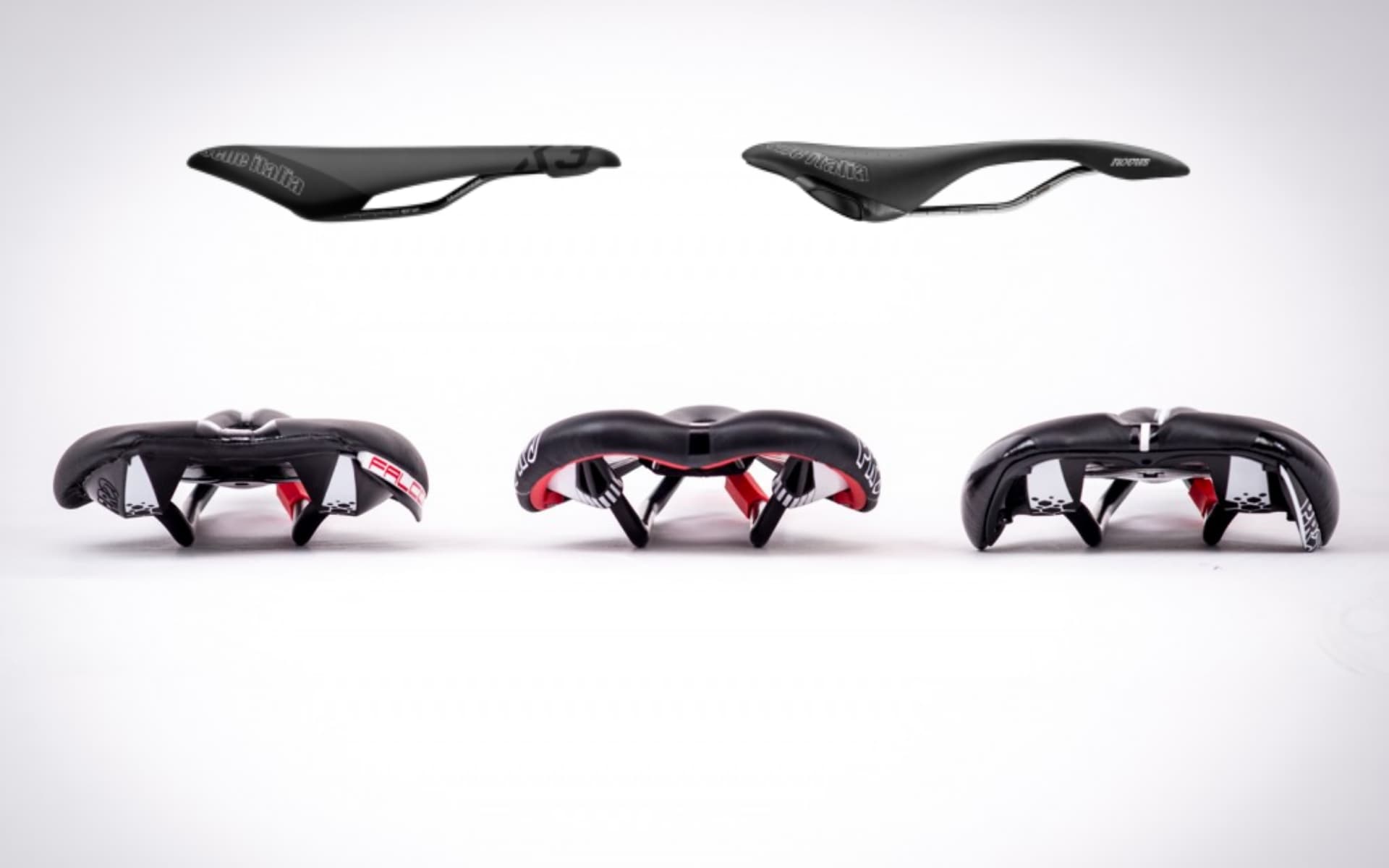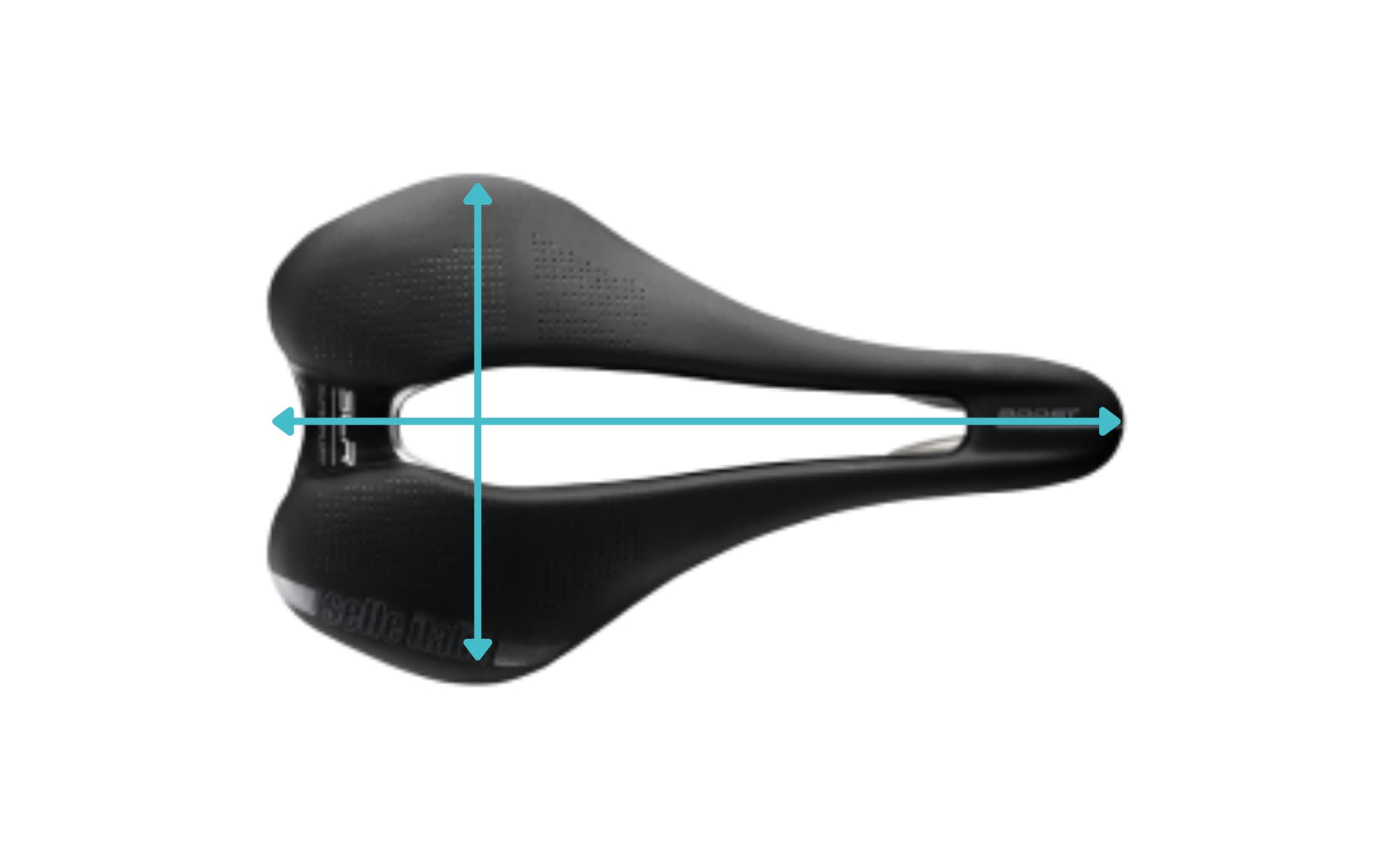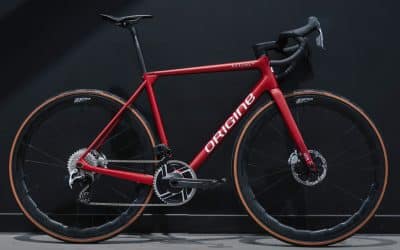Choosing a bike saddle that suits you is crucial. The saddle is one of the main points of contact, so it’s essential to choose it well to maintain the pleasure of riding. Discover the key elements to consider for making the right choice.
Before Choosing a Saddle: Factors to Consider
To choose a saddle that suits you, consider the following elements:
- The width of your pelvis and sit bones
- Your back flexibility
- Your riding style (leisure, long distance, sportive, competition)
- The discipline (road, gravel, MTB)
We can take all these measurements during an appointment with a technical advisor at the Origine factory. You can also do them yourself!
1. Measure the width of your pelvis
- Sit on a piece of corrugated cardboard that marks easily or on a memory foam surface.
- A 90° sitting position on the chair helps reproduce the pressure on the saddle: increase the pressure of your seat on the cardboard marker.
- Then measure the distance in millimeters between the two marks left by your sit bones.
The wider the spacing between your sit bones, the wider the saddle you will need. Narrow versions generally measure between 131-136 mm, while wide saddles measure 145 mm to 150 mm.

2. Back Flexibility
To measure your back flexibility, keep your legs straight and try to touch your feet with your hands. If your hands touch the ground, you have good flexibility. If your hands stop at your ankles, your flexibility is standard. If your hands stop above your ankles, you have limited back flexibility.
The more flexible you are, the more you will lean forward. A narrower saddle will suit you better. Note that a saddle with a central cut-out would be particularly suitable to limit pressure. Conversely, if your flexibility is reduced, opt for a wider and hollow saddle to better distribute your weight.

3. A Saddle for Each Riding Style
For leisure riding, a wider and hollow saddle is more suitable because the cyclist’s position is more upright.
Conversely, a competitor will prefer a flat and narrow saddle to favor an aerodynamic, forward-leaning position. A flat version also allows for quick and easy position changes on the saddle, depending on changes in elevation and pace.
For long-distance riding, the choice will be a rounded or semi-rounded saddle to ensure the body’s weight is well distributed and to stay comfortably in place.
4. Reinforcement for Off-Road
If you ride on the road, your saddle can be lightweight with limited reinforcements and flexibility. For off-road riding, whether gravel or MTB, the saddle must absorb some of the shocks and vibrations. These saddles are thus denser and filter out roughness for better comfort.
Finally, we invite you to try the tool developed by Selle Italia to find your saddle: Test the IdMatch from Selle Italia.
Choosing Your Saddle: Selection and Comparison Criteria
Among all the possible criteria for choosing a saddle, here are the main ones to consider for finding the right one.
– Profile: rounded, flat, semi-rounded
– Central Channel: without, cut-out, or perforated
– Seat Width
– Saddle Length
– Material of the Shell and Rails
1. Saddle Profiles
Rounded
Generally suitable for long distances and cyclists seeking comfort. The weight is usually better distributed, and the shape limits long-term chafing.
Flat
Designed for short distances and/or high-intensity efforts. It is suitable for cyclists who require regular position changes.
Semi-Rounded
Designed with an intermediate shape between round and flat, offering a versatile saddle model.

2. The Central Channel
The central channel can be cut-out or perforated. This reduces pressure on the perineal area and helps prevent numbness. This feature is appreciated by cyclists with good back flexibility who maintain a sporty position on their bike. The perforated space helps relieve central pressure by better distributing the weight on the seat.
It’s worth noting that this type of saddle is not necessarily for everyone, and the pressure is not completely eliminated but rather redistributed to other areas of the seat.

3. Saddle Width
The width of your pelvis directly affects the distance between the support points of the sit bones, which are the two contact points with the saddle. For a wider pelvis, a slightly wider than average saddle is recommended, and vice versa. The standard saddle width is about 135 mm.
Your position on the bike also affects the saddle width. The more upright your position (leisure), the more weight you place on the saddle. In this case, a slightly wider saddle is recommended. Indeed, your weight is distributed differently between the seat, handlebars, and pedals depending on whether you are in a sporty or more upright position. Be cautious, as a saddle that is too wide can interfere with pedaling and cause chafing on the inside of the thighs.
4. Saddle Length
A short saddle measures less than 250 mm in length. It allows you to position yourself at the back of the bike on steep descents and find your position more quickly. When standing on the pedals, a short saddle has less risk of rubbing against your thighs.
A long saddle measures more than 250 mm. It allows you to move around on the saddle depending on the phase of the ride or race (e.g., towards the front during strong accelerations). Initially, the position may be less intuitive to find.

5. Materials
Different materials, as with bike frames, have their own technical characteristics. Carbon remains the best choice in terms of comfort and weight.
– Titanium: The most comfortable, with a moderate weight
– Steel: Relatively comfortable
– Aluminum: Relatively lightweight
– Carbon: The lightest and very comfortable
The Origine team is composed of experts, cycling enthusiasts, and practitioners in all disciplines (road, gravel, cross-country, bikepacking, ultra-distance, DH, etc.). The articles written by the Origine team aim to inspire, advise, and inform you to support you in your cycling practice.


![[Guide] How to Get Started in Ultra-Cycling ?](https://cyclisthouse.origine-cycles.com/wp-content/uploads/2021/12/BikingMan-x-Origine-Cycles-1_adobespark-400x250.jpeg)
